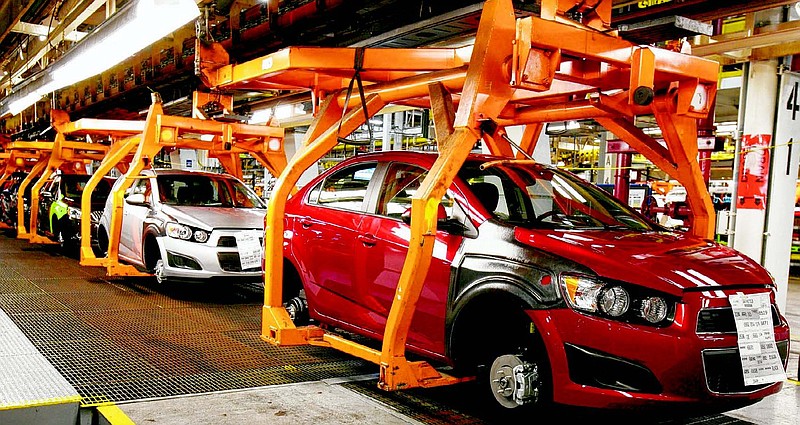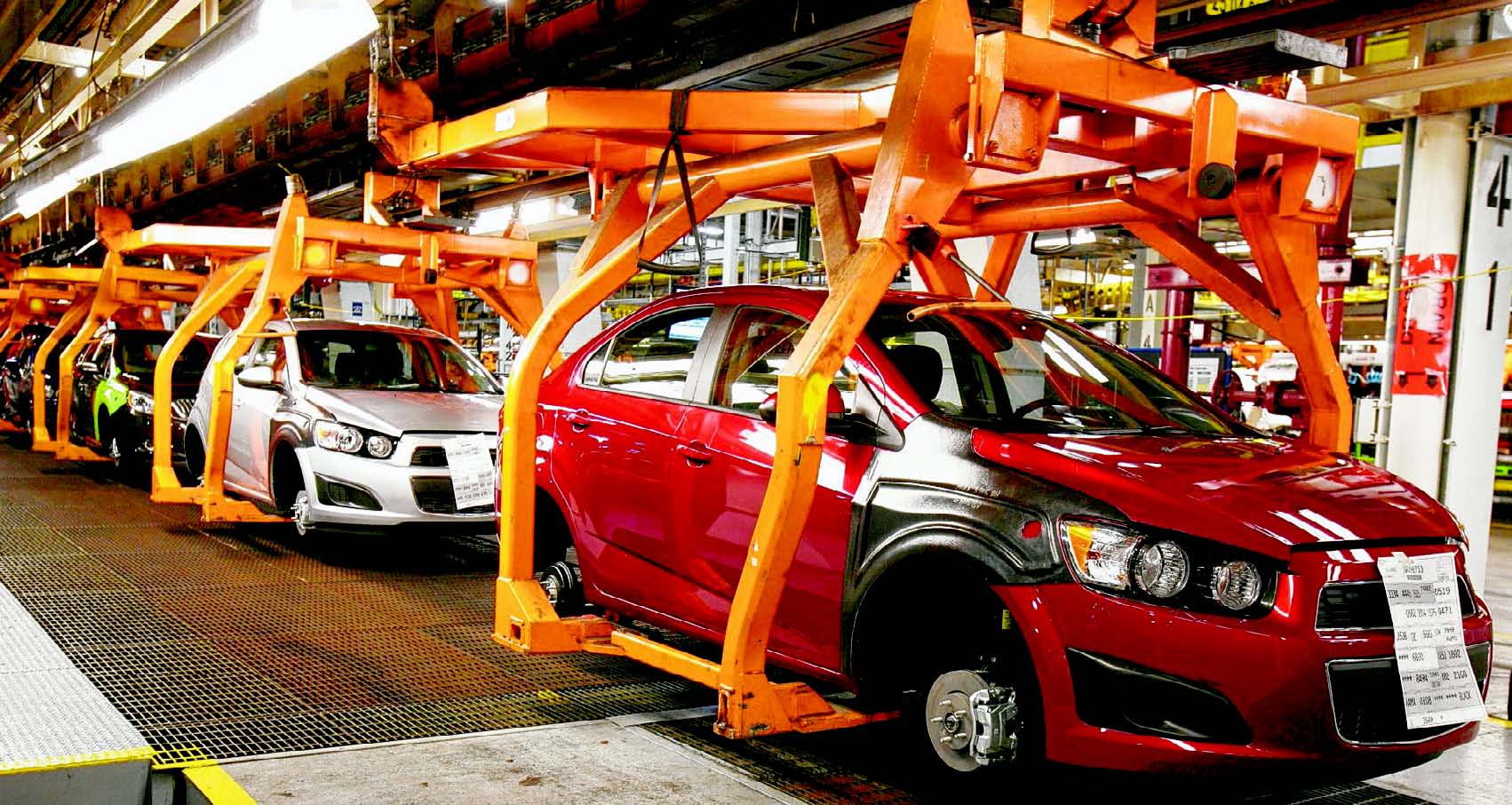Chevrolet Sonics move down the line at the General Motors Orion Assembly plant in Orion Township, Mich. Nearly four years after GM filed for bankruptcy protection, the automaker is building the Sonic, Your three line ad runs Friday, Saturday the best-selling subcompact car in the nation.
When the word reached the Orion Assembly Plant, it spread along the serpentine assembly line like news of a death or natural disaster: General Motors, the biggest automaker in the world, had fi led for bankruptcy protection.
On that grim day in 2009, Chevrolet and Pontiac sedans kept rolling down the line. And 1,700 worried workers stayed at their stations even as GM announced it would close the plant in a desperate bid to survive.
"The unknown was the scariest part," recalled Gerald Lang, who had worked at Orion for two years installing dashboards and doors. "We really had no clue what was going to happen."
There was something else that the workers didn't know: They were witnessing the opening act of one of the greatest recovery stories in American business.
Nearly four years later, Chevrolets are still moving down the assembly line under the plant's 82 acre roof. Lang and his co-workers now build the Sonic, the best-selling subcompact car in the nation. It's a vehicle no one thought could be made profitably in the U.S., by a company that few people thought would last.
But GM has not only survived, it has earned $16 billion in profits in the past three years. And the industry is on track to make this year its best year since 2007.
Detroit's improbable comeback is the work of many: President George W. Bush, who authorized the first bailout loans; President Barack Obama, who made more loans; workers who took lower wages and focused more on quality to compete with foreign rivals; and executives and designers who developed better cars amid the financial maelstrom happening around them.
To be sure, there were victims: shareholders, auto parts makers and other suppliers who went out of business, as well as taxpayers who will never get all their money back.
But there is no denying that American car makers have made a remarkable recovery. Nearly 790,000 people now have jobs building cars, trucks and parts, up 27 percent from the dark days of 2009. The story of the Sonic shows how the industry, along with a community in a downtrodden state, got there.
There was another obstacle. GM and the UAW had to figure out how to cut labor costs at the plant.
For decades, the UAW and automakers fought openly as the companies tried to reduce costs and the union demanded pay increases. The UAW would strike, or threaten to, and the companies would cave in. By 2007, GM was paying $1,400 more per vehicle for labor than nonunion Toyota.
That same year, both sides agreed to a historic compromise on labor costs. They established a two-tier wage system that would pay new employees around $14 an hour, or half the hourly wage of older workers. Worker pay and pensions were frozen. Union trusts funded by the company and workers would take over retiree health care costs. Union President Bob King said each worker gave up at least $7,000 during the four-year contract.
The first Sonic, a white hatchback, rolled out of the Orion factory in August 2011.
The car hit showrooms with a sticker price of just under $14,000 - $1,300 less than the Fit. A year later, the tiny Chevy was the best-selling subcompact in the country. Last year, GM sold more than 81,000 Sonics. Hyundai's Accent finished second at 61,000.
SEE MORE REVIEWS ONLINE AT CARS.TIMESFREEPRESS.COM

